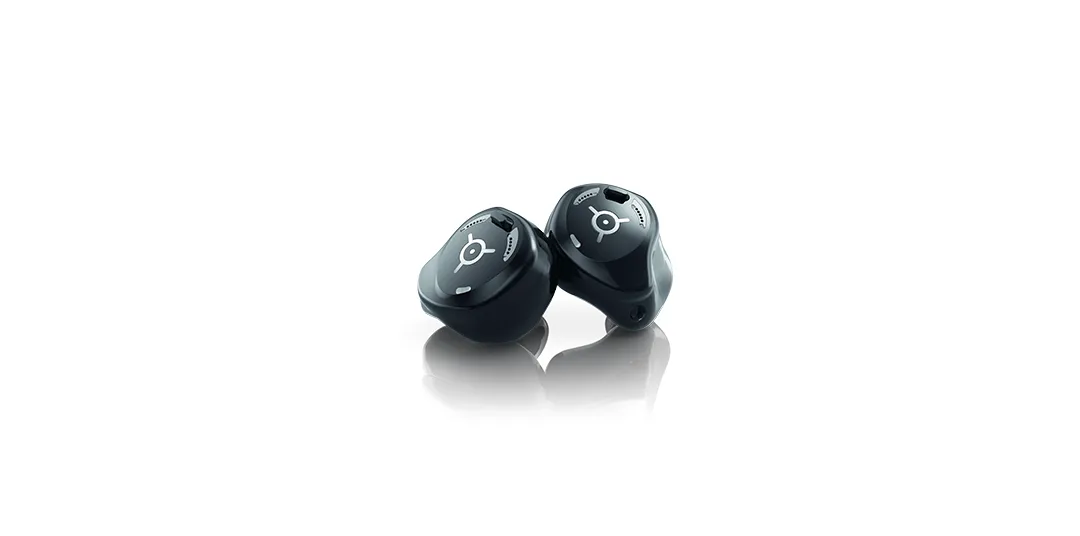Perforated Eardrum

Perforated Eardrum
10 min.
Publication Date: April 11, 2021
A perforated eardrum is when the thin, oval layer of tissue deep in the ear canal – which helps protect the delicate middle and inner ear from the outside – bursts. This can happen for several reasons, but the results are usually the same: ear pain and temporary hearing loss.
Because the ear has been exposed to potential damage and/or infection, it’s best to seek medical advice immediately regarding your perforated eardrum. In more serious cases, surgery may be required to repair the ruptured membrane.
Let’s look at some of the symptoms, causes, and treatments for a perforated eardrum.
Perforated eardrum symptoms
The most common sign of a perforated eardrum is pain or fullness in the ear; however, you can also rupture your eardrum without knowing it, there being no discernible symptoms. Other indications of a perforated eardrum include:
Sudden hearing loss
Tinnitus
Itchy ear
Ear discharge
High temperature
Symptoms normally pass as soon as the eardrum is healed, and any infection has cleared up. Contact your doctor if this fails to happen, or the condition appears to be worsening.
Causes of a ruptured eardrum
There are many reasons why the eardrum can perforate. From fluid build-up to foreign objects, they rupture at the slightest change in their environment. It’s imperative that you take good care of your ears and make sure not to handle them too roughly. Whether it’s minimising use of cotton buds when cleaning ears at home or limiting exposure to loud noises, every precautionary measure helps promote much better hearing health.
Common causes of a perforated eardrum include:
- Ear infection
- Injury to the ear
- Sudden loud noise
- Changes in pressure
Only medical examination will rule out any issues related to a ruptured eardrum. You should get yourself checked over as soon as possible, lest treatment be required for persistent, escalating symptoms.
How to treat a perforated eardrum
Any tear or hole in your eardrum should be looked into immediately. Effective handling of a perforated eardrum depends on the following action points:
Diagnosis: The first step to any successful treatment plan is diagnosis. Using a magnifying instrument known as an otoscope, your GP will be able to identify any tears or holes in the eardrum. To determine the extent of the rupture or possible causes, they may also check your overall quality of hearing.
Treatment: Because perforated eardrums often improve on their own after a few weeks, treatment isn’t always required. Still, visiting your GP will help determine the cause and allow for any treatment that you might need.
Antibiotics may be prescribed to help clear up an existing ear infection, as well as to prevent one from developing.
As your eardrum continues to heal, over-the-counter pain relievers or a warm compress on the affected ear can help.
Avoid swimming, getting your ear wet, and trying to clean your ears, too.
Symptoms should improve after a few weeks, but if not, return to your GP for a specialist referral. It could be that they need to patch the eardrum or assess whether you’d benefit from surgery.
Prevention: Seeing your GP for treatment of conditions such as ear infections will help reduce the risk of bursting an eardrum. At the same time, when you’re cleaning your ears, avoid putting anything in them – this includes cotton buds. As a rule, don’t insert anything smaller than your elbow into the ear. And if you get something stuck in there, seek medical assistance instead of attempting to remove it yourself.
By following these simple steps, you can ensure that you’re getting the right treatment for your perforated eardrum, or even avoiding a rupture altogether.
Frequently asked questions
What’s the average perforated eardrum healing time?
The healing time for a ruptured eardrum varies from patient to patient. Normally, though, symptoms abate after a few weeks, and the membrane will mend of its own accord.
Is a perforated eardrum an emergency?
A lot of the time, perforated eardrums are not emergencies and if the symptoms are not too serious, you can let yours heal on its own. Although, if the rupture is secondary and there is blood coming out of the ear, this may suggest a skull fracture and you’ll need an urgent medical examination.
Can a perforated eardrum cause permanent hearing loss?
You’ll be pleased to hear (excuse the pun) that most hearing loss experienced as a result of a perforated eardrum is usually temporary and shouldn’t affect your long-term hearing health. Just make sure you get medical treatment early if symptoms are particularly bad.



